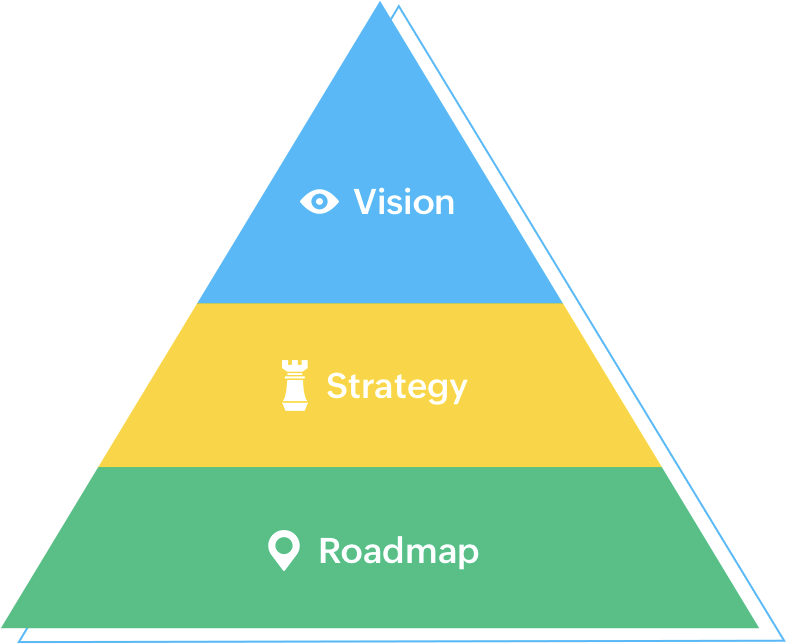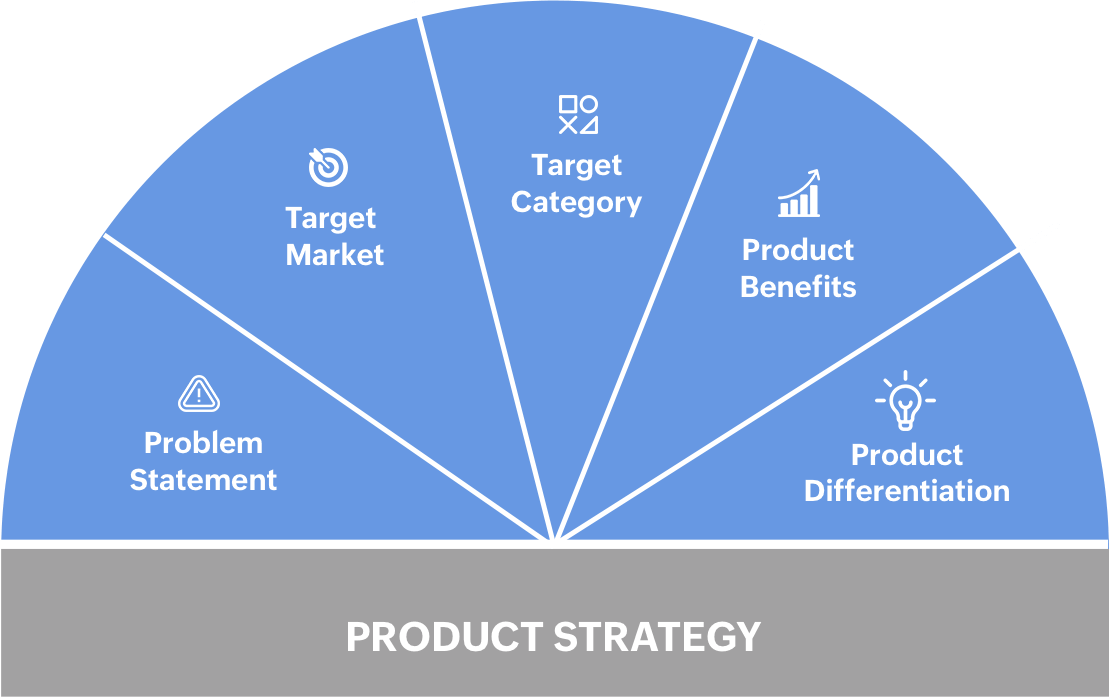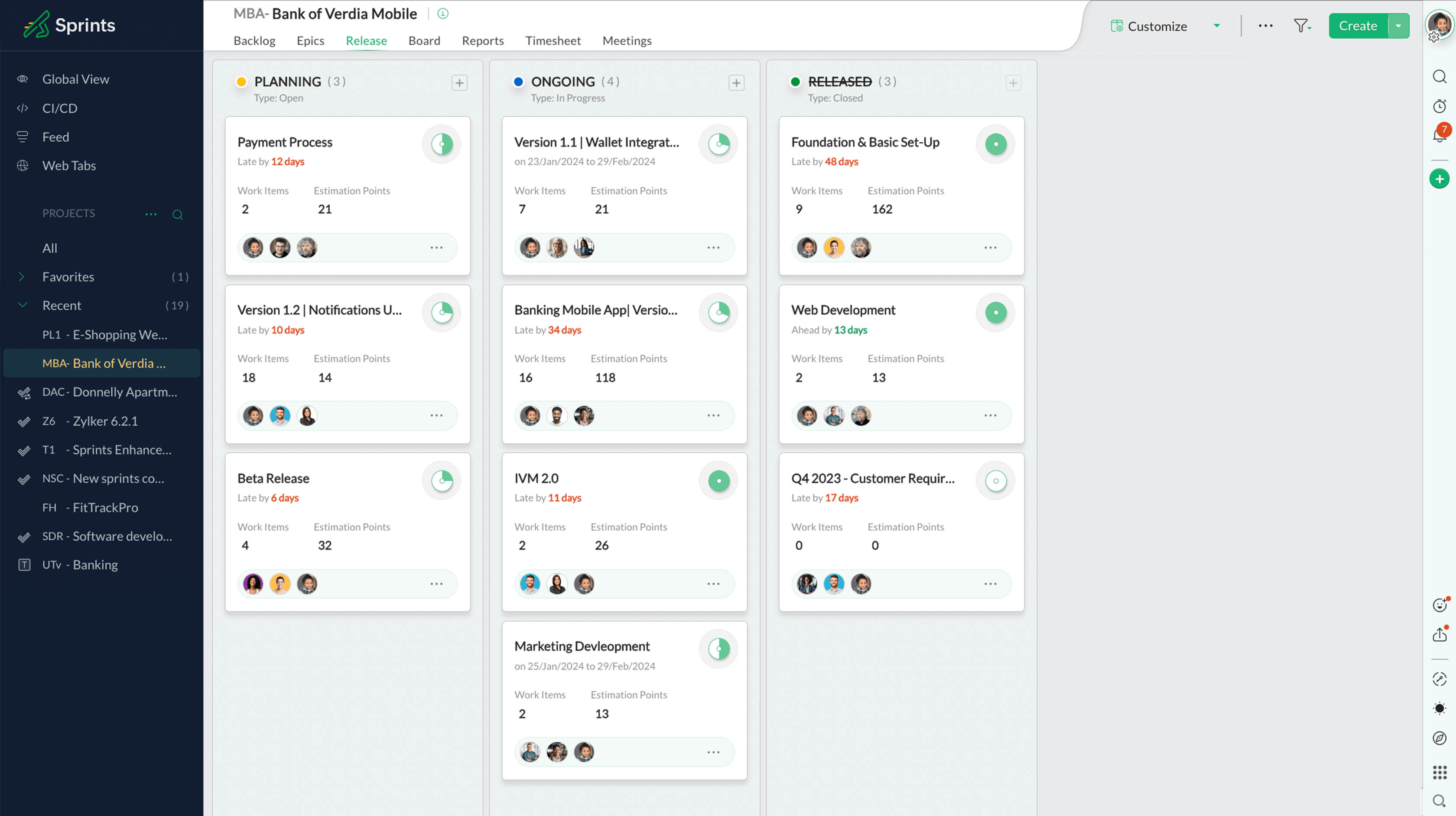What is Product Strategy?
Having a novel idea for building a product is great! However, an idea isn't all you need. Your product needs a product strategy, which is the driving force of your product's destiny. A product strategy outlines your product vision and is a logical, step-by-step process that helps you achieve your overarching goals. This is where you get specific about the initiatives your product team plans to take to achieve the desired outcomes for your product.
Each product you build should have its own vision and strategy. While the product vision is intended to define a destination, the product strategy can be thought of as your road to getting there. Having an inspiring product vision and an effective product strategy motivates product teams to build products that customers love to use.
Why is product strategy important?
Many teams start with a loose plan, but tend to lose sight of their product vision over time. They get distracted by short-term motivations and change so frequently that nothing gets done along the way. Such changes are often reactive and short-sighted. While it's good to embrace change and be agile, a solid product strategy not only helps you decide what to do but also what NOT to do.
Everyone in your team needs to know the strategy and understand how it impacts their work. One of the most unfortunate side effects of lack of direction is the impact on your product team's morale. Teams that float around without a sense of purpose are the least motivated.

Key elements of an effective Product Strategy
Can you outline the plans you need to execute to be successful? Your product strategy should summarize your ideas and intended outcomes in a format that's easy to understand and communicate. There's no single right way to articulate a strategy. Most teams struggle to express their product strategy in simple terms. Some teams publish long documents that last for many pages, while some prefer one-pagers and mind maps. Regardless of how you choose to craft your strategy, you should always be able to boil down the essence to one or two simple sentences.
Most teams confuse product strategy as a plan to build certain capabilities. Top-down plans that instruct a team to build features without understanding the context and purpose are bound to fail. As a product manager, you have to engage with all your stakeholders and make them feel a part of the process. When your team is involved, they're much more likely to own the outcomes of the strategy.
WHO are you building for?
WHY are you building?
WHAT are you building?
Product Strategy Example
Let's take the example of building an online meeting tool.
Product Vision
To make online meetings secure.
Product Strategy
To build a safe and secure online meeting tool for small distributed teams so that they can collaborate effectively without worrying about cybersecurity threats.
Problem Statement
Successful product managers fall in love with problems, not solutions. Spending time talking to customers and identifying their problems is an important skill of every product manager. A problem statement clearly articulates the problem that your product aims to solve for your customers. If you've already discovered your problem, investing time in talking to potential customers will help validate your problem statement.
Empathizing with the pain points of customers is the key to solving them. Focusing on their problem helps you keep an open mind as you consider various solutions to address the problem you're eager to solve. Your product would be more effective if it satisfies one strong need rather than several weak ones.
Target Market
A target market refers to a group of potential customers to whom your product would appeal the most. Who you're building for is a critical decision that can make or break your strategy. Trying to be all things for all people is a recipe for failure. If you don't get this right, you'd end up spending a lot of money acquiring the wrong customers.
Market research helps in identifying the overall size and potential revenue of your target market. You can further segment your target customers by demographic, psychographic, geography, and behavior. Identifying the target market is an essential step for all your marketing activities. It helps product marketers create a buyer's persona and craft an effective positioning and go to market strategy.

Target Category
It's easy for customers to relate to something they're familiar with. Most often, you're building a product for a category that already exists. When you position your product in a specific category, you're trying to influence your customers' perception of your product. You might believe that your product is unique and groundbreaking, but it's wise to pick a category that your target market can easily identify.
Product benefits
Features are things that the product can do. Benefits are the value created by the product for your customers. Let's take the example of an online meeting tool. The ability to share your screen is a feature, but being able to host a securely encrypted meeting is a benefit. Most product teams end up building a laundry list of features that don't add any value. Before you design features and develop them, it's a good practice to identify how they benefit your target customer.
Product differentiation
Your target customers will compare the benefits of your product against other products that offer similar benefits. They'll also compare the cost and evaluate other aspects before adopting any product. That's where differentiation comes in. Having a clear understanding of your competitive landscape will help you to identify how your product should stand out. A differentiator does not have to be the most important feature or benefit of the product. Excellent customer service, privacy, and security are some excellent differentiators that can make you stand out from the competition.
Executing your product strategy
In a nutshell, the product strategy provides context for your product development activities. If you're feeling lost or struggling to get a consensus on the future of your product roadmap, pondering over your product strategy will guide you on the right path. It's the responsibility of the product manager to evangelize and execute the product strategy. As you begin to execute your strategy, you're going to need a tool to manage your product development activities. An agile tool like Zoho Sprints helps in organizing your product backlog, planning your releases, and tracking product development progress.
